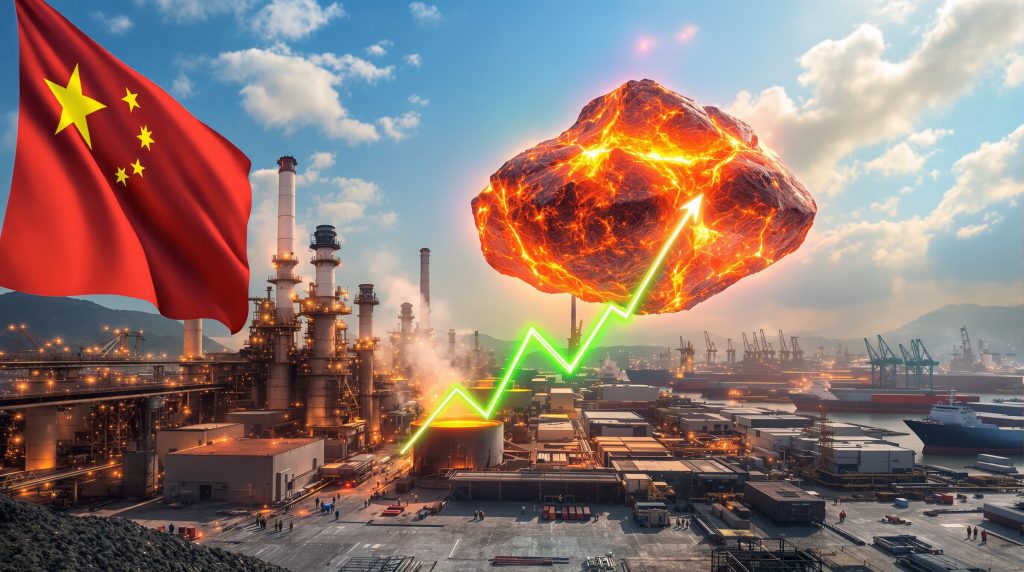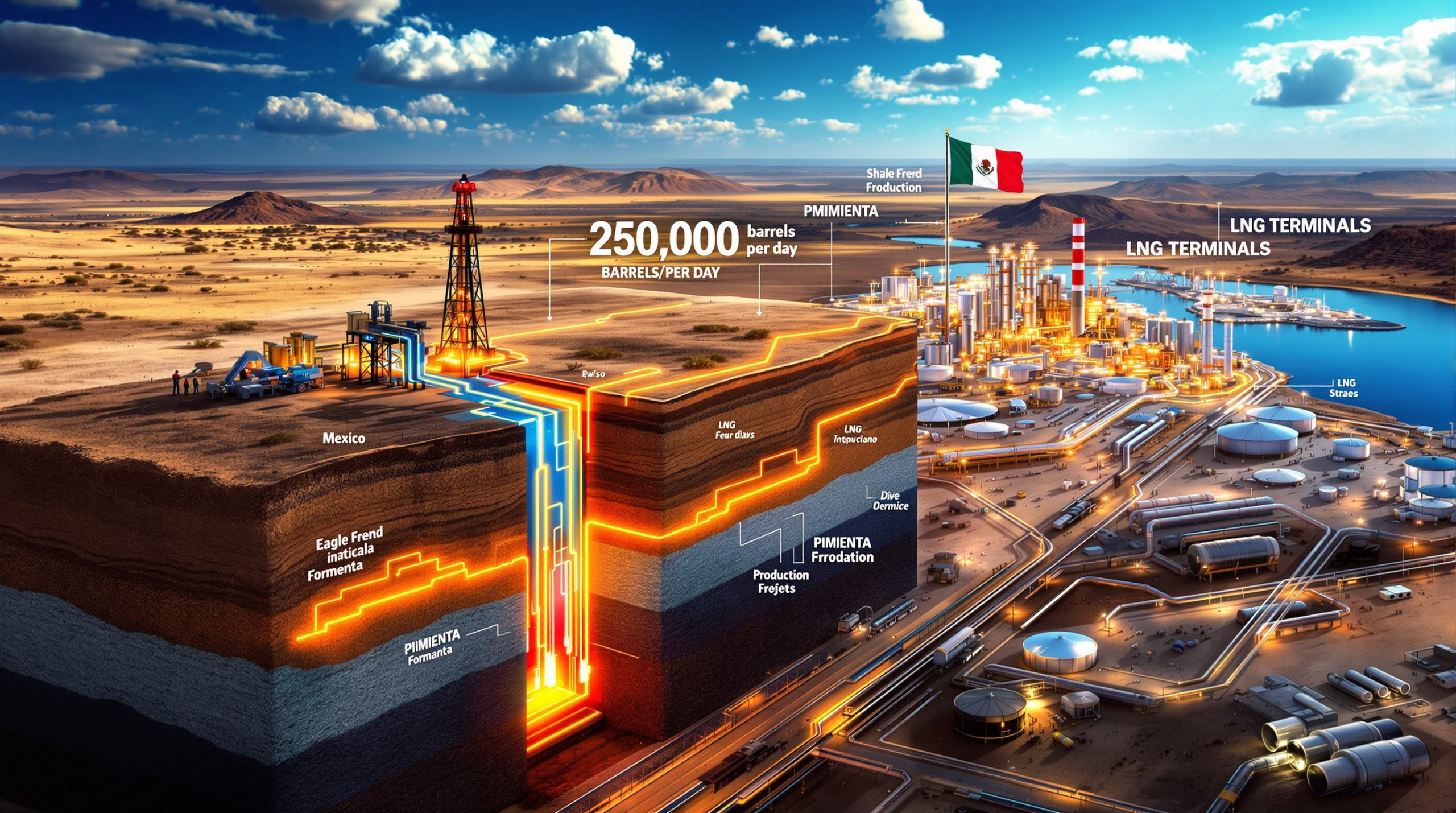Iron Ore Price Rebounds as China Demand Concerns Fade
Iron ore markets have shown remarkable resilience this week, rebounding after a prolonged decline as fears about Chinese demand disruptions proved less severe than initially anticipated. This turnaround highlights the complex relationship between China's industrial policies, environmental initiatives, and the global raw materials markets that supply the world's largest steelmaking nation.
Production Cut Impact Less Severe Than Expected
The iron ore market experienced a significant rebound on Thursday following six consecutive sessions of decline, primarily driven by the realization that mandated production cuts in China would be less impactful than feared. These restrictions were implemented ahead of China's September 3 military parade commemorating the end of World War II.
The January iron ore contract on China's Dalian Commodity Exchange (DCE) closed 0.98% higher at 772.5 yuan ($107.63) per metric ton, while the benchmark September iron ore on Singapore Exchange rose 0.55% to $101.3 a ton by 0704 GMT.
"The length of the production restriction in Tangshan is shorter than expected, therefore the overall impact will be limited," noted a market analyst familiar with the situation.
This recovery came as a surprise to many traders who had positioned themselves for a more significant demand drop. The restrictions in Tangshan, China's steel production powerhouse, were implemented to ensure better air quality in Beijing during the upcoming military parade. However, the scope and duration of these restrictions proved less extensive than market participants had anticipated.
Tangshan's Influence on Market Sentiment
Tangshan's outsized role in China's steel industry means that production changes in this region can significantly impact global iron ore demand. Located approximately 150 kilometers east of Beijing, the city produces roughly 14% of China's total crude steel output, making it a critical barometer for the health of the entire sector.
While production cuts were mandated, their shorter-than-expected duration limited the overall impact on steel output capacity, subsequently supporting iron ore prices. This dynamic demonstrates how closely tied iron ore markets are to policy implementation details rather than just policy announcements.
Market analysts observed that hot metal output, a key gauge of iron ore price trends, would likely hold steady despite the restrictions, providing crucial support for ore prices in the near term.
How Are China's Steel Production Trends Affecting Iron Ore Markets?
Current Production Resilience
Despite the production restrictions, hot metal output has maintained remarkable stability. This resilience suggests that steel producers have found ways to optimize their operations even under regulatory constraints.
"Hot metal output, a gauge of iron ore demand, will likely hold steady this week, lending support to ore prices," according to an industry expert tracking Chinese production metrics.
Steel mills outside the restricted areas have partially compensated for the reduced output from Tangshan, creating a regional production shift that has moderated the overall impact on iron ore demand. This adaptation highlights the flexibility within China's steel industry to respond to localized restrictions.
The ability of steel producers to maintain relatively stable hot metal output despite these challenges indicates sophisticated production management capabilities and strategic inventory planning that have evolved through years of navigating policy-driven restrictions.
Year-to-Date Production Statistics
According to China's National Bureau of Statistics, crude steel production across China's top ten steelmaking provinces and autonomous regions has experienced a 3.3% year-on-year decline between January and July 2025. This reduction reflects broader trends in China's steel industry, including ongoing efforts to rationalize production capacity and respond to fluctuating demand signals.
The contraction in steel output has varied significantly by region, with some areas facing stricter environmental enforcement than others. This regional variation creates a complex landscape for iron ore forecast insights that doesn't always move in lockstep with headline production figures.
Despite the overall production decline, iron ore imports have shown greater resilience than might be expected, suggesting that mills are maintaining higher-grade ore inventories to maximize efficiency and minimize emissions when operating under restrictions.
What's Behind the Recent Price Volatility in Iron Ore Markets?
Six-Day Price Decline Factors
Prior to Thursday's rebound, iron ore prices had fallen for six consecutive trading sessions, creating significant downward momentum that concerned many market participants. This decline was primarily driven by anticipation of the production cuts in Tangshan aimed at improving air quality for Beijing during the military parade.
The market's initial reaction to the announced restrictions was amplified by uncertainty regarding their scope and duration. Traders, operating with limited information, priced in worst-case scenarios that assumed extensive and prolonged production curtailments.
Additionally, the timing of these restrictions coincided with seasonal demand patterns, creating a perfect storm for price pressure. Typically, steel demand sees some moderation during this period as construction activities adjust to seasonal factors.
Market Sentiment Shifts
The dramatic shift in market sentiment that drove Thursday's price rebound demonstrates how trader perceptions can sometimes diverge from industrial realities. As more detailed information about the actual implementation of production cuts became available, the market quickly reassessed its position.
This rapid sentiment reversal highlights the role of information asymmetry in commodity markets, where those with the most accurate and timely insights into policy implementation details can gain significant advantages.
Speculative trading played a substantial role in both the decline and subsequent rebound, with financial traders sometimes amplifying price movements beyond what physical market fundamentals might warrant. This speculative element adds another layer of complexity to understanding iron ore price rebounds as China demand concerns fade.
How Do Other Steelmaking Ingredients Compare to Iron Ore Performance?
Related Commodity Price Movements
While iron ore showed resilience on Thursday, other steelmaking ingredients continued to face pressure. Coking coal fell by 1.5% on the Dalian Commodity Exchange, while coke prices decreased by 0.95%. This divergence in performance between iron ore and other steelmaking inputs creates an interesting dynamic within the broader steel production cost structure.
The differential performance suggests that market participants view the factors affecting iron ore demand somewhat differently than those impacting coal and coke markets. This could reflect expectations about the duration of production restrictions or assessments of available inventories for different raw materials.
These price movements also indicate potential compression in steel mill margins, as input costs are not moving in uniform directions. This margin pressure could eventually influence production decisions beyond the mandated restrictions.
Steel Benchmark Performance
Finished steel products on the Shanghai Futures Exchange showed modest declines across the board:
- Rebar decreased by 0.03%
- Hot-rolled coil fell 0.44%
- Wire rod eased 0.15%
- Stainless steel shed 0.27%
This downward pressure on steel prices, combined with the rebound in iron ore, suggests a potential squeeze on steelmaker profitability that bears watching. If this trend continues, it could eventually lead to voluntary production cuts beyond those mandated by environmental policies.
The relatively modest declines in steel prices compared to the previous sharp drops in iron ore prices also indicate that end-user steel demand remains relatively stable despite the production disruptions.
What Are the Longer-Term Outlook Factors for Iron Ore?
China's Steel Industry Structural Changes
China's steel industry is undergoing significant structural changes that will shape iron ore demand patterns in the coming years. Environmental policies continue to evolve, with increasingly stringent emissions standards pushing steelmakers toward higher-quality inputs and more efficient production methods.
The country's production capacity rationalization efforts aim to eliminate outdated and polluting facilities while concentrating output in more modern, efficient operations. This transition favors producers who can deliver higher-grade iron ore that enables more efficient steel production with lower emissions.
A gradual shift toward electric arc furnace (EAF) production, which primarily uses steel scrap rather than iron ore, represents another long-term consideration for iron ore markets. While this transition is moving slowly, it does suggest a potential ceiling on future iron ore demand growth in China.
Global Supply Considerations
On the supply side, major iron ore producers have largely maintained disciplined approaches to capacity expansion, learning from previous boom-bust cycles that led to price collapses. This restraint has helped support price floors during periods of demand uncertainty.
New project developments and expansions are proceeding, but at a measured pace that aims to match anticipated demand growth rather than exceed it. This more balanced approach to supply growth represents a significant shift from previous industry cycles.
Potential surplus impact analysis remains an important market consideration, whether from weather events affecting Australian shipments or operational challenges in Brazil. The concentration of global seaborne supply among a handful of major producers means that disruptions can quickly impact global market balances.
How Does the Military Parade Factor Into China's Industrial Policy?
Historical Context of Production Restrictions
The production restrictions implemented for the September 3 military parade follow a well-established pattern in China's industrial policy. Similar measures have been implemented during previous high-profile events, including past military parades, international summits, and the Beijing Olympics.
These event-related production limits typically focus on heavy industries with significant emissions impacts, including steel, cement, aluminum, and chemicals. The geographic scope usually encompasses regions within a certain radius of the event location, with more stringent measures applied to facilities closer to Beijing.
The duration of such restrictions has varied historically, ranging from a few days to several weeks depending on the nature and importance of the event. The current restrictions appear to fall on the shorter end of this spectrum, explaining the market's revised assessment of their impact.
Environmental Policy Implementation
These event-driven restrictions exist within the broader context of China's "Blue Sky" initiatives, which aim to improve air quality in major urban centers. These policies represent an intersection of environmental goals, public health concerns, and political priorities.
For Beijing specifically, maintaining clear skies during high-profile events carries significant political importance, demonstrating the government's ability to control pollution when necessary. However, these measures must be balanced against economic priorities, particularly in key industrial sectors like steel production.
The implementation approach typically involves a combination of mandated production cuts, enhanced emissions monitoring, and temporary shutdowns of the most polluting facilities. The economic impact of these measures is carefully considered to minimize disruption while achieving the desired environmental outcomes.
FAQ: Iron Ore Market Dynamics
Why did iron ore prices fall for six consecutive sessions?
Iron ore prices declined for six straight sessions primarily due to market concerns about demand reduction stemming from anticipated production cuts in Tangshan. These restrictions were implemented ahead of China's September 3 military parade to ensure better air quality in Beijing.
Traders initially interpreted the announced restrictions as potentially severe and prolonged, leading to speculative positioning that amplified the price decline. This reaction demonstrates how policy announcements can trigger market movements even before their actual implementation and impact are fully understood.
As more details emerged about the scope and duration of the restrictions, the market reassessed its position, leading to Thursday's price rebound. This pattern highlights the importance of accurate information in commodity markets and the potential for sentiment-driven overshooting in either direction.
What factors determine iron ore price sensitivity to Chinese policy changes?
Several key factors influence how sensitively iron ore prices react to policy announcements in China:
- Supply-demand balance: When markets are tightly balanced, even minor disruptions can cause significant price movements
- Inventory levels: Higher port and mill inventories can buffer the impact of short-term production disruptions
- Policy implementation details: The geographic scope, duration, and enforcement mechanisms of restrictions significantly affect their market impact
- Alternative supply sources: The availability of alternative suppliers or grades can moderate price reactions
- Market sentiment: Prevailing trader psychology can amplify or dampen price responses to policy announcements
Understanding these factors helps explain why similar policy announcements can sometimes produce dramatically different market reactions depending on the prevailing context.
How do seasonal factors affect iron ore demand in China?
Seasonal patterns play an important role in China's iron ore demand:
- Construction activity: Typically peaks in spring and autumn, creating higher steel demand during these periods
- Winter heating season: Often comes with production restrictions in northern regions to reduce pollution during high energy consumption periods
- Summer slowdown: Construction activities sometimes moderate during extreme heat periods in certain regions
- Holiday effects: Production and consumption patterns shift around major holidays like Chinese New Year
These seasonal patterns interact with policy-driven restrictions, sometimes amplifying their impact when they coincide and sometimes moderating it when they offset each other. Experienced market participants factor these seasonal considerations into their interpretation of policy announcements.
Expert Analysis: Market Implications
Short-Term Price Forecast
The iron ore market appears to have found a floor after the recent six-day decline, with prices stabilizing as concerns about the severity of production cuts have eased. In the near term, prices are likely to trade within a range defined by current levels as support and recent highs as resistance.
Key indicators to watch include:
- Daily hot metal production rates in major steelmaking regions
- Port inventory changes that might signal shifts in actual consumption
- Policy statements regarding the duration of current restrictions
- Steel mill margin developments that could influence production decisions
The market will be particularly sensitive to any signals about whether restrictions might be extended beyond their initially communicated timeframe or if additional environmental measures might be implemented in other regions.
Supply-Side Considerations
Major iron ore producers are likely to maintain disciplined approaches to shipments despite the recent price volatility. The concentrated nature of global seaborne supply, with Australia iron ore leadership and Brazilian miners dominating the market, means that producer decisions have significant price implications.
Shipping data will be closely monitored for any adjustments to vessel loadings that might signal a supply response to the temporary demand disruption. However, the relatively short duration of the current restrictions makes major supply adjustments unlikely.
Production cost curves continue to provide important context for market floors, with marginal producers in China beginning to face economic pressure when prices approach certain thresholds. This cost structure helps explain why price declines tend to slow as they approach these levels, creating natural support zones.
Recent miners' demand insights from major producers like Reuters suggest that despite short-term volatility, the underlying fundamentals remain relatively stable, with China's demand expected to maintain its structural importance to global iron ore markets over the medium term.
Disclaimer: The analysis provided represents current market conditions and is subject to change as new information becomes available. Commodity markets are inherently volatile and subject to numerous factors beyond those discussed here. This information should not be construed as investment advice.
Looking to Capitalize on the Next Major Mineral Discovery?
Discovery Alert's proprietary Discovery IQ model provides real-time notifications of significant ASX mineral discoveries, turning complex data into actionable investment insights. Visit our discoveries page to understand how historic mineral discoveries have generated substantial returns for early investors.




